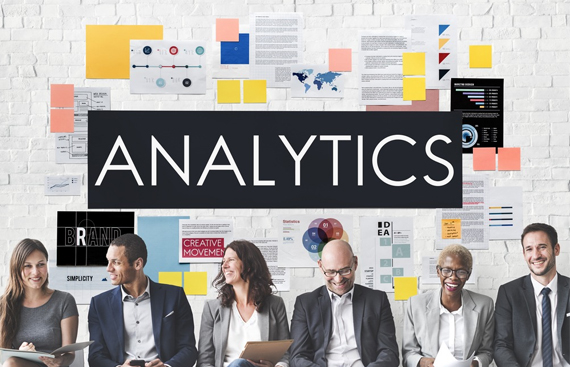Data and Diversity: Mitigating Unconscious Bias in Recruitment

In the pursuit of a diverse workforce, organisations face a persistent challenge – unconscious bias in hiring processes. This subtle yet impactful force can permeate various stages of recruitment, contributing to unintended consequences such as a lack of diversity, missed talent, and a less inclusive workplace. As technology plays an ever-expanding role in recruitment through AI and data analytics, it becomes imperative to address the implicit biases embedded in the algorithms, shaped by the data sets they use.
Understanding unconscious bias
Unconscious bias refers to the ingrained and often unintentional attitudes or stereotypes that individuals hold towards certain groups of people. These biases are shaped by cultural, social, and personal experiences, and they can influence decision-making and behaviour without conscious awareness. Operating on a subconscious level, it affects how individuals perceive, evaluate, and interact with others based on factors such as race, gender, age, or other characteristics. Importantly, these biases can lead to unfair and discriminatory practices, as individuals may unknowingly favour or disadvantage certain groups. A few examples of such biases in hiring are:
- Confirmation bias: Involves selectively seeking information that aligns with pre-existing views, risking the rejection of qualified candidates based on personal opinions.
- Affinity bias: The tendency to favour candidates with similar backgrounds, risking a lack of diversity in perspectives within a data science team.
- Gender bias: Preferring one gender over another, potentially leading to underrepresentation of women and other gender identities in tech roles.
- Age bias: Discriminating based on age, potentially excluding experienced professionals or innovative thinkers.
AI biases in recruitment can extend to favouring candidates with specific attributes or backgrounds. For example, systems may disproportionately select individuals with names commonly associated with certain caste groups, or show a preference for candidates who have attended prestigious universities, reinforcing socio-economic biases.
Additionally, if historical data reflects imbalances in gender representation within certain industries, AI algorithms might perpetuate these trends by favouring candidates with characteristics similar to past hires, inadvertently limiting diversity.
In 2019, a study by the National Bureau of Economic Research (NBER) in Cambridge, Massachusetts, highlighted the potential for biased algorithms in hiring processes to discriminate against specific groups, such as race or gender. The paper, titled 'Discrimination in the Age of Algorithms' and authored by Jon Kleinberg from Cornell University, Jens Ludwig from the University of Chicago, Sendhil Mullainathan from the University of Chicago, and Cass R. Sunstein from Harvard Law School, stresses the importance of implementing safeguards. The authors emphasise that without these, the risk of undetected discrimination in a world of unregulated algorithm design could worsen.
Strategies for Effective Bias Mitigation
Blind Recruitment:
It involves removing personally identifiable information from job applications, such as names and photos, to mitigate biases; for example, by using anonymized resumes during the initial screening process.
Diverse Job Postings:
AI algorithms enhance diversity in job postings by promoting gender-neutral language like "Sales Representative" instead of "Salesman" and using inclusive pronouns such as "they" to avoid gender bias.
Diversity-Focused Recruitment Platforms:
AI algorithms on specialised platforms can intelligently match candidates with diverse backgrounds to relevant job opportunities.
Structured Interview Processes:
Structured interview processes involve using a predetermined set of questions and evaluation criteria for all candidates, minimising bias; for example, by utilising a standardised scoring system to assess responses consistently.
Diverse Interview Panels:
This can ensure that multiple perspectives are considered and can reduce the likelihood of homogeneity-related judgments during candidate evaluations.
Diverse and Representative Training Data:
It is crucial to compile datasets that encompass a wide range of characteristics, including race, gender, age, and socioeconomic background. By incorporating a wide range of perspectives, AI models can better generalise and avoid reinforcing existing societal prejudices.
Continuous Education and Awareness:
Regularly educating hiring teams about unconscious bias and providing tools for self-assessment can contribute to a more conscious and equitable recruitment process.
Candidate Feedback Mechanisms:
Establishing feedback mechanisms allows candidates to share their experiences during the recruitment process. Analysing this feedback can uncover potential biases in interviews.
In a 2023 study titled 'Diversity matters even more: The case for holistic impact' by McKinsey & Company, findings indicated that a 10 percent increase in women's executive representation in the 2019 dataset corresponded to an average 2.1 percent rise in both women employees and women managers by 2021. The most recent analysis underscores that companies with more diverse boards of directors are likely to achieve better financial performance.
In addressing unconscious bias in hiring, organisations recognize the importance of a diverse workplace. Beyond the moral imperative, a diverse workforce is seen as a strategic move, as highlighted in the era of AI-driven recruitment. The positive impact of diversity on employee engagement and retention, coupled with the ability to understand a wider customer base, aligns with the proactive steps needed to rectify biases in technology.
By fostering inclusivity, companies not only comply with ethical considerations but also gain a competitive edge through increased innovation, employee engagement, and market competitiveness, creating a holistic approach to building a successful and growth-oriented workforce.
